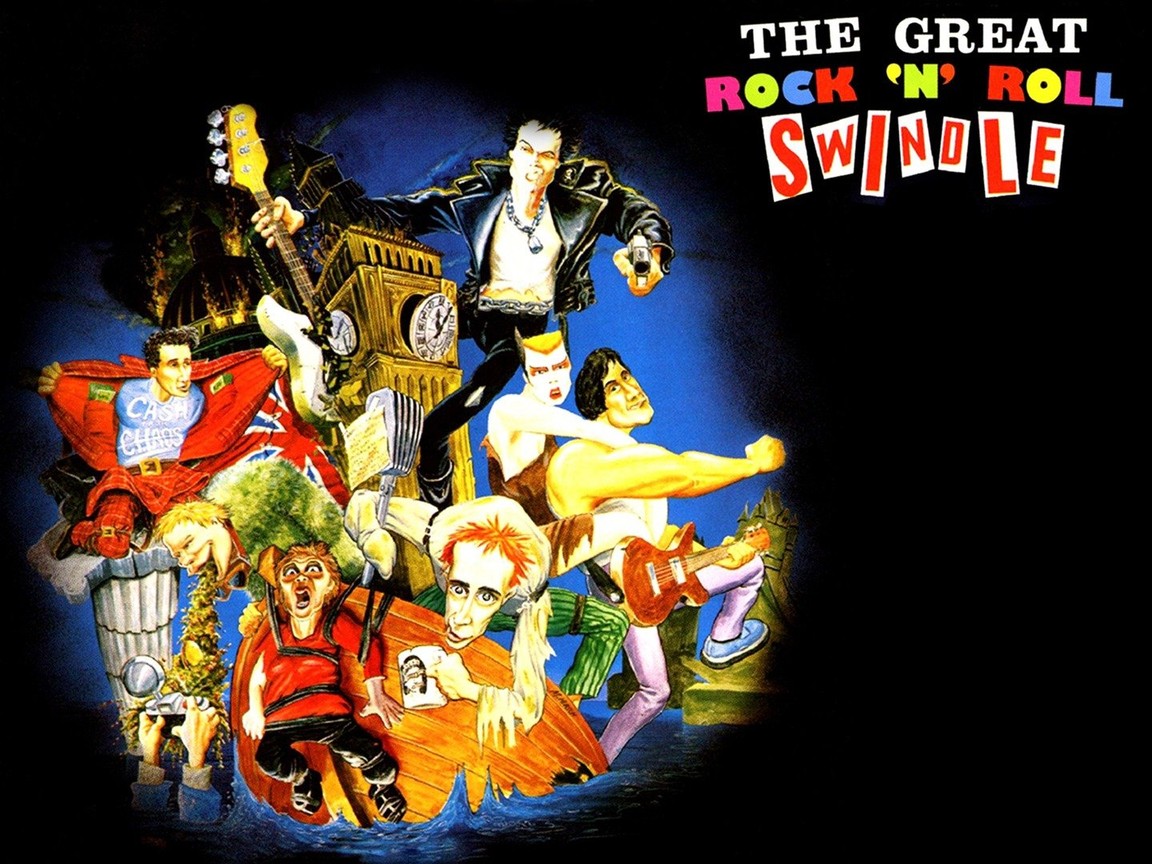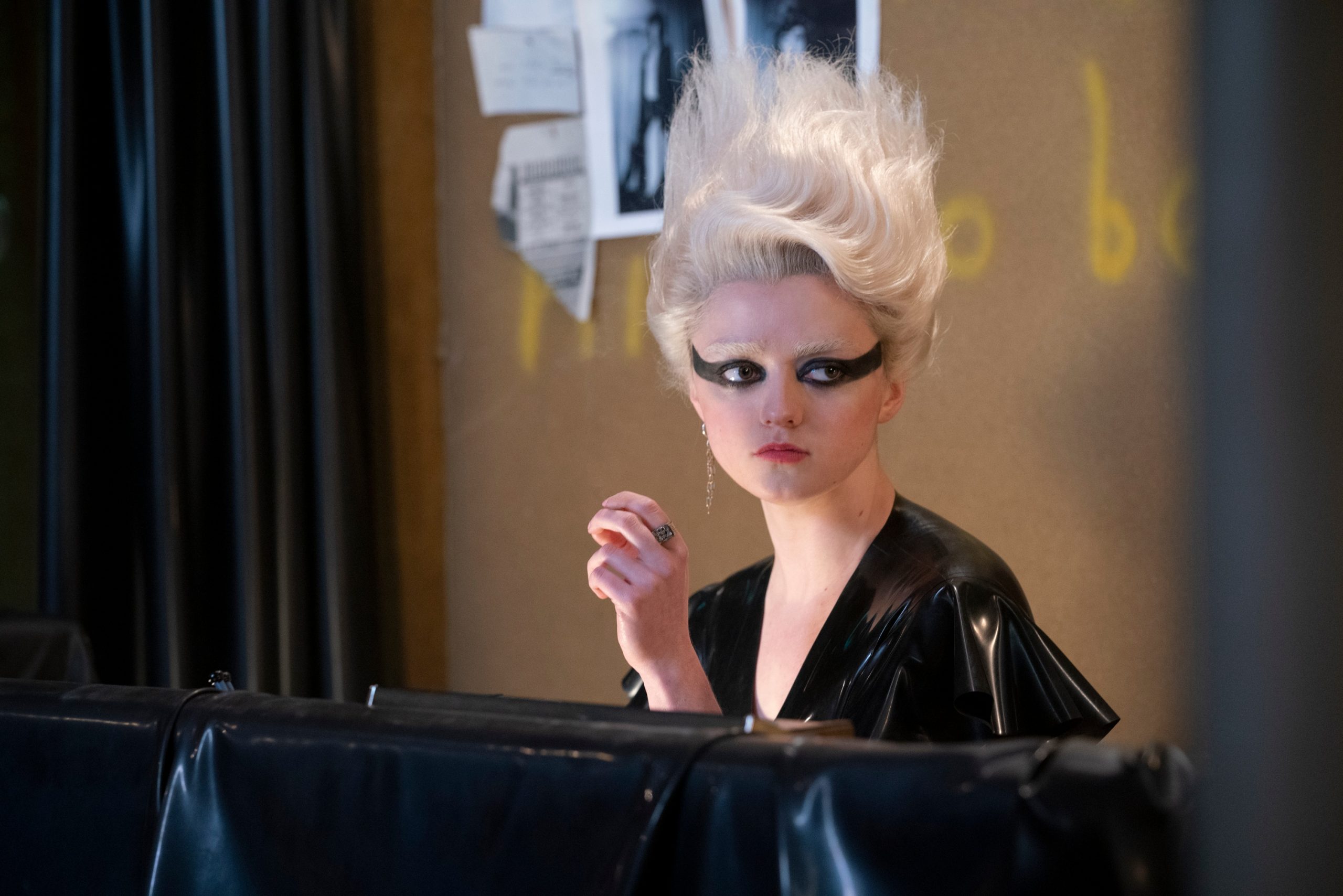
Before the subculture’s 21st century commodification, punk inspired many other art forms, not least film. From Derek Jarman to Julien Temple, punk lived authentically on screen as well as the stage.
K-Punk writer Mark Fisher once wrote that we are in the cultural era of “nostalgia mode”, doomed to recycle history while divorcing ourselves from the reality of that history.
That’s nowhere as true as with punk, a small yet era-defining moment in 1977 that sunk its claws into the collective cultural consciousness and never let go.

Julien Temple’s The Great Rock n’ Roll Swindle
Bleeding out from music into fashion, art, nightlife and film, punk has been embraced and commodified by everyone from the V&A to Primark t-shirts, signifiers of convention that the Sex Pistols and their contemporaries sought not only to rip up, but raze to the ground.
Now, upon entering the canon of the ‘prestige TV drama’ in Pistol on Disney+, punk’s become even more divorced from its anarchic roots. Yet buried beneath the diluted depictions of the movement are a cluster of films which encapsulated the real filth and fury of the era.
Derek Jarman’s punk polemic Jubilee exploded onto the zeitgeist in 1978, showing an apocalyptic future vision of England awash in casual cruelty and nihilism, elements firmly rooted in the time period it was made. Its prescient power manages to both capture the disaffection of the 1970s just as clearly as it speaks to and critiques our reality-TV-numbed brains of today.
“Life in England these days is inflationary, but we’re carrying on regardless, coping with misgovernment and idiocy on every side,” says Amyl Nitrate (punk pioneer Jordan), the leader of a girl gang that rules the streets with weapons and a gleeful misandry.
Its visual alchemy is a collage of the iconic accoutrements of punk safety-pinned together; lurid red anarchist symbols graffitied on the ruins of dilapidated buildings, face paint, the bondage gear of Kings Road’s SEX and a permanent expression of disdain. Featured are a coterie of young punk starlets, including Toyah Wilcox and a baby-faced Adam Ant.
Fires blaze, thievery and violence run rampant and the whole of England decays, a concrete urban wasteland on grainy 16mm and 35mm film. Made with an estimated budget of £200,000, its shoestring production even embodies the DIY ethos of punk.
Capturing a generation of people who had grown up, “not with books and not with the cinema, but with the TV”, Jarman’s film is one of anger and discord, where law and order can’t be trusted, art is dead, and there’s no moral code except dissatisfaction.
These themes segue lightheartedly into Julien Temple’s The Great Rock and Roll Swindle (shot in 1978 but not released until 1980), a cheeky send up of the punk movement and a snapshot of the band who started it all.
Capitalising on the infamy of the Sex Pistols, it’s an anarcho-punk-musical, as farcical as Jubilee’s fairytale is nightmarish; a ‘mockumentary’ collage of 50s Rockabilly pastiche and rat-pack postering (Sid Vicious cosplays as both Eddie Cochran and Frank Sinatra) and scenes that use elements of Hollywood movies and film noir to satirise the Pistols – and McLaren’s – public personas.
At the core of it, outside of thrilling musical numbers, is the disgust at, and mistrust of, the establishment: law and order, the police, the government, and most bitingly of all, the music industry, who are seen as cashing in on a generation’s anger.

Maisie Williams starring in Danny Boyle’s Disney+ series Pistol
Punk was supposed to have died with the disbandment of the Pistols, but during the 1980s, London’s Central St Martins were churning out a hotbed of experimental filmmakers that were keeping the spirit of punk alive, grouped together under the moniker of the ‘New Romantic Filmmakers’.
Through their films like John Maybury’s The Court of Miracles (1982) and Cerith Wyn Evans’ The Miracle of the Rose (1984), they reinvigorated punk’s rebellious nature with works that were critical of authority and pushed the boundaries of sex and violence, all utilising cheap and accessible Super 8 cameras in the essence of punk’s raw style.
Court of Miracles starred an up-and-coming Siouxsie Sioux and used surrealist shock-tactic visuals, such as decaying genitals and a collage of blood, to examine the clichés of contemporary media: in the 1980s of Thatcherite individualism, mainstream media and technology had become the new establishment, a new form to brainwash the masses and rally against.
Biopics are often obscured by the rose-tinted fog of nostalgia; punk, in its true, ugly form, was unsentimental.
These films are not glamorous celebrations of a movement built on a generation’s misery, but hum with a vibrant rage, a colourful cynicism which spoke to the heart of punk and its repetitive resounding warrior cry of a world with “no future, no future, no future for me”.





1 Comment
You eloquently summed up the Punk era film nour!